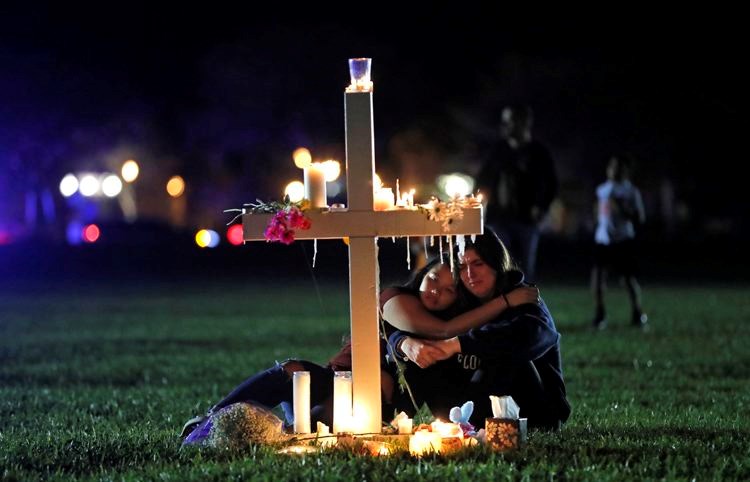So far this year, there have been at least seven school shootings in the United States. That's more than one a week, more school shootings than many countries have ever had. Last month, for example, a 15-year-old killed two of his peers (and injured 18 others) at his high school in Kentucky.
This is not an anomaly. The United States is suffering from a gun-violence epidemic, one that has been spilling into schools.
Since 2000, there have been more than 188 shootings at schools and universities. It's hard to cite a definitive number, because the federal government does not study gun violence in the United States. The National Rifle Association has opposed any measure to fund research or accounting of America's gun epidemic.
More than 200 students have been killed. At least 200 more have been injured.
But one statistic truly points out how unusual the problem is.
A couple of years ago, the Academy for Critical Incident Analysis collected data on school violence around the world. They took a broad look at incidents where someone was killed, or a murder was attempted, and charted every one that had two or more victims.
Between 2000 and 2010, the recorded 57 incidents in 36 countries.
Half of those incidents - 28 - occurred in the United States.
That's right. In U.S. schools, there was as much violence as schools in Argentina, Australia, Azerbaijan, Belgium, Bosnia-Herzegovina, Brazil, Bulgaria, Canada, China, Denmark, England, Finland, France, Germany, Greece, Guatemala, Hungary, India, Israel, Italy, Japan, Kenya, Latvia, The Netherlands, Northern Ireland, Norway, Poland, Russia, Scotland, South Africa, South Korea, Swaziland, Thailand, Trinidad and Tobago and Yemen.
Combined.
That's all the more shocking when you consider that in 2010, the United States had about 309 million residents. The population of the other countries totaled 3.8 billion. It's worth noting, too, that 13 of those countries had never suffered a school massacre.
Violence in U.S. schools is much more likely be carried out by a gun, too. As Quartz explained about the study: "In the vast majority of U.S. killings, perpetrators used guns. By comparison, China - with the second-greatest number of incidents - saw 10 mass killings, but none involving firearms. Germany saw three mass shootings; Finland saw two. Thirteen other countries each saw one incident with at least one person being wounded or killed; in the rest nobody was reported as hurt."
Americans have a disproportionate number of guns (at least 300 million, about one per person), especially handguns and semiautomatic weapons. (A bullet from an AR-15 rifle, which the alleged shooter used in the Florida attack Wednesday, can penetrate a steel helmet from 500 yards. As the New Yorker put it: "When fired from close range at civilians who aren't wearing body armor, the bullets from an AR-15 don't merely penetrate the human body - they tear it apart. It "looks like a grenade went off in there," Peter Rhee, a trauma surgeon at the University of Arizona, told Wired.)
Also, as my WorldViews colleague Rick Noack points out, we're much more lax about who can by and keep weapons, and it's harder for children and adults to access mental health services.
Of course, the United States is not the only country struggling with school violence. But it's the only country where there are so many guns, and where violence against students - children mostly - is almost routine.



